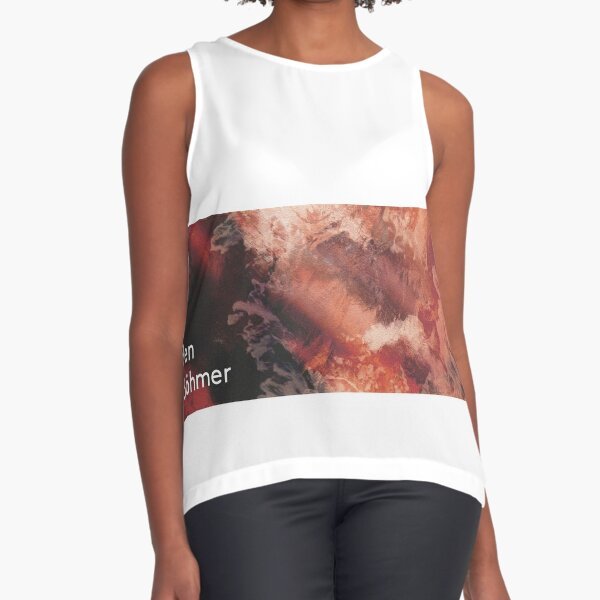Branded Merch, The Evolution
The Genesis and Popularity of Screen Printing
Screen printing on t-shirts and other merchandise has long been a quintessential medium for creating branded mementos. While the process that we know in modern times originated in the early 1900s from early Chinese traditions, screen print became increasingly popular for apparel in the 1960s. It was especially important within the counterculture movements wherein a graphic tee could express a social or political statement. Over time, the process of transferring vibrant prints and graphics onto basic apparel styles, gained immense popularity, becoming a symbol of belonging and representation. Whether it was for a favorite musician, a workplace, or a memorable vacation, these printed items provided a tangible connection to cherished experiences and communities.
Integration with Fashion and Rise of Streetwear
The Rolling Stones
The 1970s through the 1990s marked a pivotal era in the evolution of screen prints and their use on clothing. In the music industry, the Sex Pistols, Rolling Stones, Led Zeppelin, and many others, created iconic graphics for their merchandise that are still collector’s items today. By the 1990s. logo-based products were a key part of any luxury brands offer—driven by a need to stand out from the competition amidst globalization. Brands like Prada and Tom Ford’s Gucci led the way.
Sex Pistols, original
As the new century began, fashion and street culture began to intertwine more formally, ultimately contributing to the birth of "streetwear." Originating from the grassroots of urban culture rather than high-end designer studios, streetwear embodied a fusion of fashion, music, and art, harkening back to the 1960s. This shift catalyzed a growing interest in screen printing and and other printing techniques that consider the quality of color, the complexity of the graphics, the diversity of materials used, and the speed of bringing products to market.
Accelerating Innovations Beyond the 1990s
Post-1990s, the industry witnessed a rapid acceleration in innovations, particularly in the realm of printing technology. These advancements significantly transformed the process and quality of branded merchandise production:
Direct to Garment (DTG) Printing: This technology allows for printing directly onto clothing with specialized inkjet technology. It's particularly beneficial for detailed designs and for short runs or one-off prints, as it doesn't require the setup of traditional screen printing.
Digital Sublimation Printing: This method involves printing onto a special sheet of paper and then transferring that image onto fabric using heat. It's great for polyester and allows for vibrant, full-color images that are embedded into the fabric rather than sitting on top.
Automated Screen Printing: While traditional screen printing is still widely used, automation has improved its efficiency and consistency. Automated screen printing machines can handle large volumes faster and with less labor, making them ideal for large orders of branded merchandise.
Eco-Friendly Inks and Processes: There's a growing trend towards using water-based inks and sustainable practices. These inks are less toxic and more environmentally friendly than traditional plastisol inks. Companies are also adopting more sustainable practices in their printing processes to reduce waste and energy consumption.
3D Printing on Fabric: Although still in its nascent stages, 3D printing technology is being explored for direct application onto apparel. This could open up new possibilities for texture, structure, and customization in clothing design.
UV Printing: UV printers can print onto a variety of surfaces, including textiles. They use UV light to dry or cure ink as it's printed. This method is known for its durability and the vibrancy of its colors.
Heat Transfer Vinyl (HTV): HTV allows for the creation of custom designs that are then cut out of vinyl and heat pressed onto apparel. It's excellent for bold, graphic designs and is popular for small runs and custom apparel.
AI-Driven Design: Artificial intelligence is starting to play a role in designing prints and patterns for apparel. AI can create unique designs based on trends, historical data, and even specific brand requirements.
On-Demand Printing Services: With the rise of online platforms, brands and individuals can now design and order custom prints on apparel without the need for inventory. This model reduces waste and allows for more customization.
Smart Clothing: Integrating technology like conductive threads or smart textiles into apparel printing allows for the creation of clothing that can interact with devices or change appearance
Ben Böhmer tank
Impact on the Music Merchandise Industry
These technological advancements have had a profound impact on the use of prints, logos, and graphics on apparel. The ubiquity in prints at all levels of fashion can be seen on today’s runway and in stores across the world. Within the music merchandise industry, these innovations have enabled the creation of more complex, artistic, and visually striking graphics and opportunities to stand out from a sea of sameness. This has led to a resurgence of interest in the “band tee” creating a new opportunity for heritage bands to license original art to the likes of Target, Uniqlo and Urban Outfitters. Additionally, the last decade has seen the emergence of new companies leveraging these tools to push the boundaries of what is possible in music merchandise and printing.
While the industry continues to evolve, the focus now is increasingly on moving beyond conventional designs. The next frontier appears to be a deeper integration of graphics, prints, and patterns into overall apparel design and expansion of styles. This evolution aims not just to brand merchandise but to encapsulate and extend the creative vision of musical artists, thereby offering fans a more immersive and meaningful connection to their favorite music and musicians.



